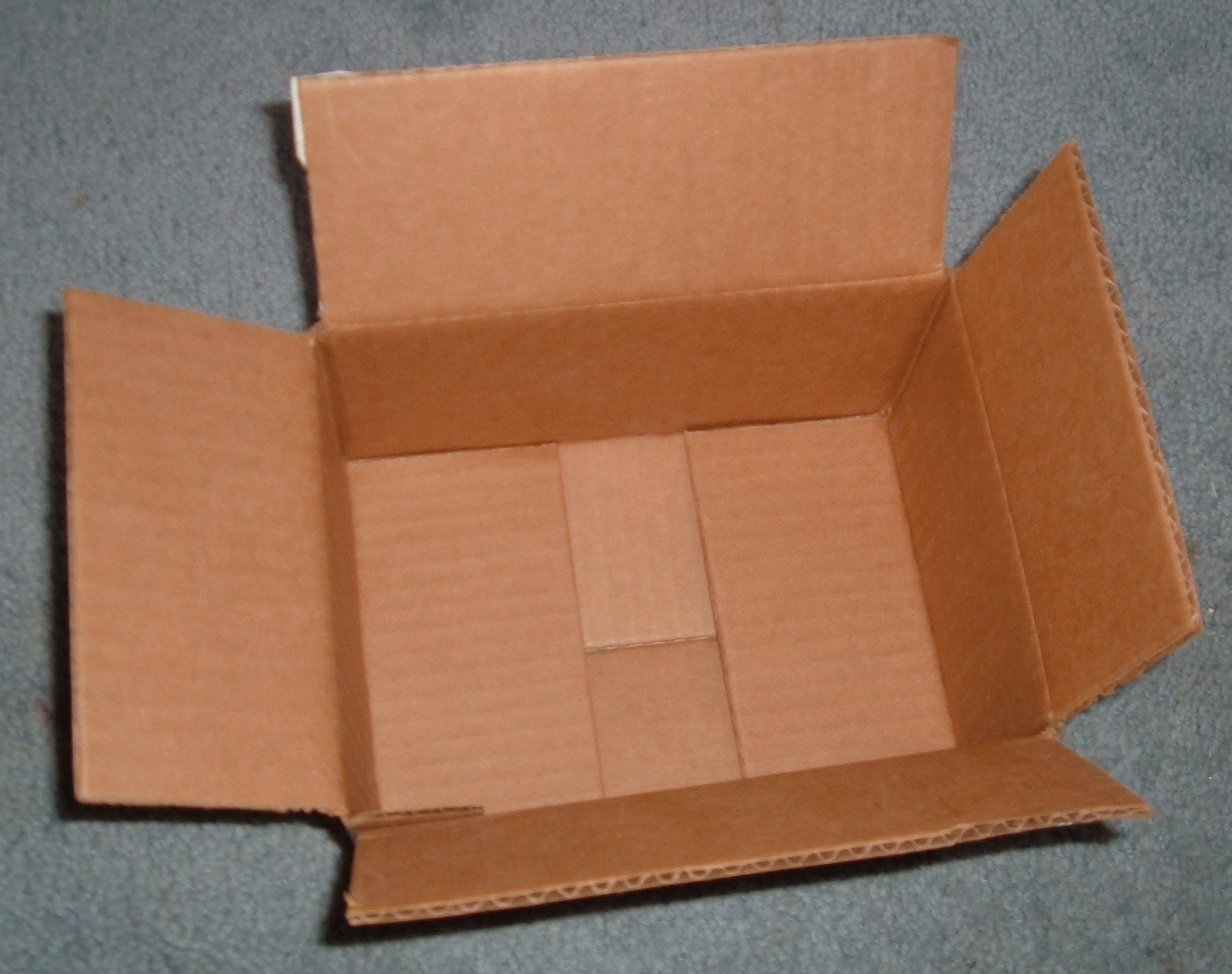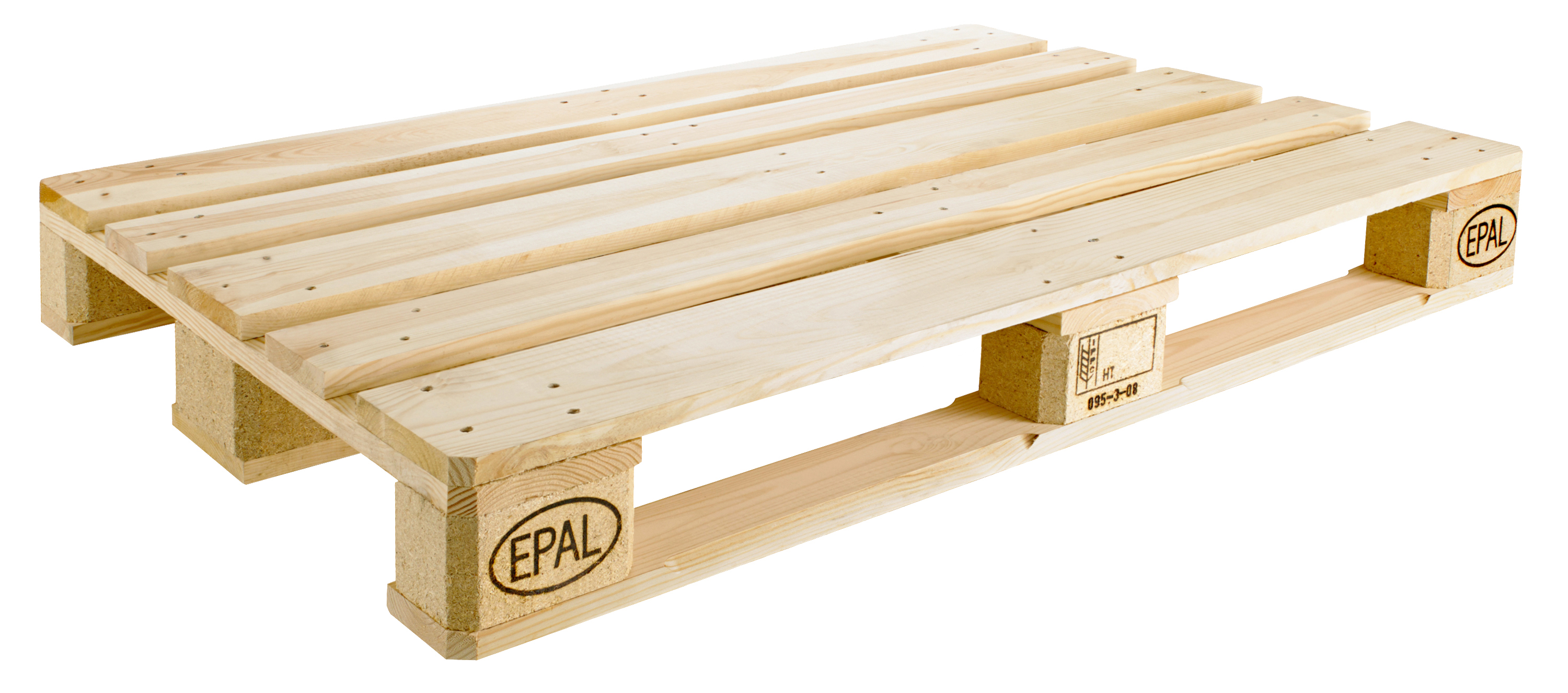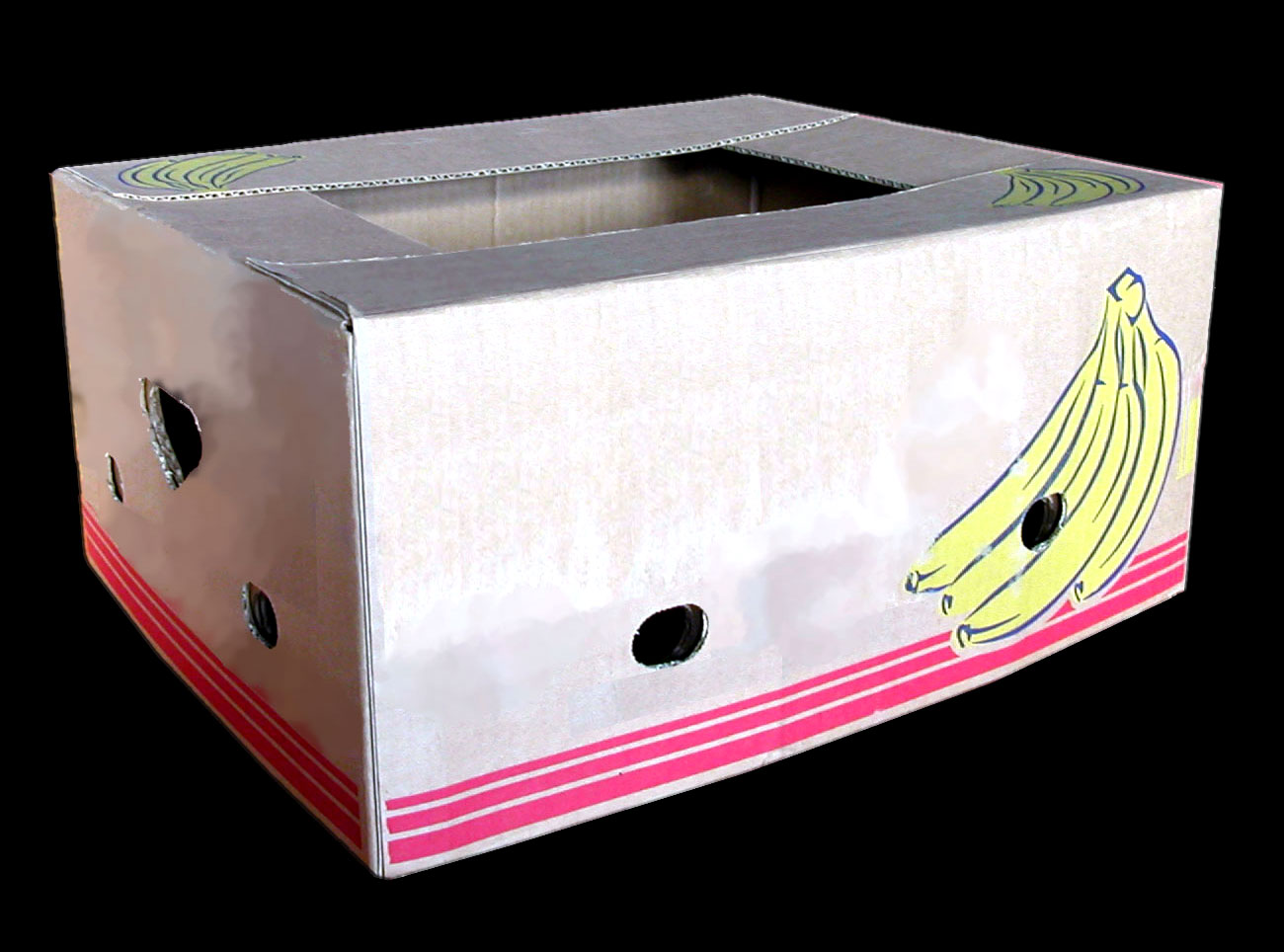|
Eurocontainer
A Euro container, also called Eurobox, Euro crate or KLT box (from german: Kleinladungsträger, "small load carrier"), is an industrial stacking container conforming to the VDA 4500 standard. The standard was originally defined by the German Association of the Automotive Industry (VDA) for the automotive industry, but was subsequently adopted across many other areas of manufacturing and the shipping industry. The most common sizes (length × width) are 600 × 400 mm and 400 × 300 mm, which can be stacked together to fill a Euro-pallet measuring 1200 × 800 mm. Dimensions Eurocontainers are based around two standard heights of and , including a overlap in the vertical direction—the height of the feet, or base, stacked into the lip of the box below: These containers are manufactured typically in grey polypropylene or another thermoplast by injection molding. Containers with full floor and walls are watertight. Many designs have at least two or more often four rectan ... [...More Info...] [...Related Items...] OR: [Wikipedia] [Google] [Baidu] |
Cardboard Box
Cardboard boxes are industrially prefabricated boxes, primarily used for packaging goods and materials. Specialists in industry seldom use the term cardboard because it does not denote a specific material. The term ''cardboard'' may refer to a variety of heavy paper-like materials, including card stock, corrugated fiberboard, and paperboard. Cardboard boxes can be readily recycled. Terminology Several types of containers are sometimes called ''cardboard boxes'': File:Cream of Wheat.jpg, Paperboard carton or box File:Archive boxes.JPG, Corrugated box File:Yoohoo-boxes.jpg, Drink box File:ErlebnisSennerei Zillertal Bergmilch.jpg, Gable-top carton made of liquid packaging board File:White-Box-of-Chocolates.jpg, Set-up box made of rigid paperboard In business and industry, material producers, container manufacturers, packaging engineers, and standards organizations, try to use more specific terminology. There is still not complete and uniform usage. Often the term "cardboard" is ... [...More Info...] [...Related Items...] OR: [Wikipedia] [Google] [Baidu] |
Gastronorm
Gastronorm (GN), sometimes spelled ''Gastro-Norm'', is a European standard for kitchenware tray and container sizes that is commonly seen worldwide in the catering and professional food industry, as well as in certain parts of the high-end consumer market. Gastronorm is generally used worldwide except in the United States and some parts of Canada, which have their own domestic systems. The gastronorm standard was first introduced in Switzerland in 1964 and became an official European standard in 1993 with the EN 631 standard. The basic format is called "GN 1/1" and measures 530×325 mm, with other Gastronorm sizes being multiples and submultiples of this basic module size. Gastronorm containers allow for flexible, place efficient, and compatible storage, transport, processing, and serving and can be adapted for shelving, transport on trolleys and conveyor belts, secure temporary placement in compatible sinks, working tables, refrigerators, freezers, ovens, hot water baths, a ... [...More Info...] [...Related Items...] OR: [Wikipedia] [Google] [Baidu] |
Preferred Metric Sizes
Preferred metric sizes are a set of international standards and de facto standards that are designed to make using the metric system easier and simpler, especially in engineering and construction practices. One of the methods used to arrive at these preferred sizes is the use of preferred numbers and convenient numbers such as the Renard series, the 1-2-5 series to limit the number of different sizes of components needed. One of the largest benefits of such limits is an ensuing multiplicative or exponential reduction in the number of parts, tools and other items needed to support the installation and maintenance of the items built using these techniques. This occurs because eliminating one diameter fastener will typically allow the elimination of a large number of variations on that diameter (multiple thread pitches, multiple lengths, multiple tip types, multiple head types, multiple drive types, and the tools needed for installing each, including multiple drill bits (one for each ... [...More Info...] [...Related Items...] OR: [Wikipedia] [Google] [Baidu] |
EUR-pallet
The EUR-pallet, also known as Euro-pallet or EPAL-pallet, is the standard European pallet as specified by the UIC pallet working group and the UIC 435-2 leaflet. Pallets conforming to the standardization are eligible for the European Pallet Pool (EPP), the system which allows for an exchange as "pallet for pallet". The EUR/EPAL-pallet is ; it is a four-way pallet made of wood that is nailed with 78 special nails in a prescribed pattern. The weight of a EUR/EPAL-pallet (EPAL 1) is approx. 25 kg. Around 450-500 million EUR-pallets are in circulation. The safe working load of a EUR/EPAL-pallet is 1,500 kg. The maximum additional load can be up to 4,000 kg when stacking. The EUR/EPAL-pallet may weigh up to . (1.5 metric tonnes) when equally loaded, otherwise the limit is . History The Euro-pallet dates back to the wooden pallets used in railway transport. In 1961 the European railways commissioned the standardization of a common pallet type under the auspices of the UIC. The ... [...More Info...] [...Related Items...] OR: [Wikipedia] [Google] [Baidu] |
Systainer
Systainers (from sys-tem con-tainers) are modular inter-stacking plastic containers used for transporting power tools. Boxes from different manufacturers are compatible and can be stacked and clipped together. A design using four joining clips was introduced by Festool Tooltechnic in 1993. In 2010 the T-Loc variant was introduced using a rotating handle for connecting and locking of containers, in combination with redesigned feet. To reduce plastic pollution, Festool designed the Systainer to first allow distribution of products, then be reused in stacking form as reusable packaging for tool transportation and storage. Several power tool manufacturers use or offer Systainer-compatible variants. Other manufacturers use the alternative Sortimo L-Boxx design. The term "Systainer" was trademarked in the United States in January 1994. Dimensions Variations In 2009, the design of Tanos' T-Loc stacking boxes was registered in the name of Timo Kuhls. In 2011, the design of Maki ... [...More Info...] [...Related Items...] OR: [Wikipedia] [Google] [Baidu] |
German Association Of The Automotive Industry
The German Association of the Automotive Industry or VDA (german: Verband der Automobilindustrie e. V.) is a German interest group of the German automobile industry, both automobile manufactures and automobile component suppliers. It is member of the European Automobile Manufacturers Association (ACEA). The VDA represents carmakers including BMW, Volkswagen, and Mercedes-Benz parent Daimler but also counts foreign suppliers and foreign-owned carmakers like Opel among its members. The group is located in Berlin, Germany. Activities The VDA hosts the Europe's largest motor show, the biannual International Motor Show Germany (IAA) in Frankfurt. The VDA published a series of standards and recommendations. Among those is the German quality management system (QMS) for the automobile industry. The fourth edition was issued in December 1998, and became mandatory for all German car makers on April 1, 1999. The VDA is a founding member of both the ENX Association (since 2000) and Odett ... [...More Info...] [...Related Items...] OR: [Wikipedia] [Google] [Baidu] |
Euro-pallet
The EUR-pallet, also known as Euro-pallet or EPAL-pallet, is the standard European pallet as specified by the UIC pallet working group and the UIC 435-2 leaflet. Pallets conforming to the standardization are eligible for the European Pallet Pool (EPP), the system which allows for an exchange as "pallet for pallet". The EUR/EPAL-pallet is ; it is a four-way pallet made of wood that is nailed with 78 special nails in a prescribed pattern. The weight of a EUR/EPAL-pallet (EPAL 1) is approx. 25 kg. Around 450-500 million EUR-pallets are in circulation. The safe working load of a EUR/EPAL-pallet is 1,500 kg. The maximum additional load can be up to 4,000 kg when stacking. The EUR/EPAL-pallet may weigh up to . (1.5 metric tonnes) when equally loaded, otherwise the limit is . History The Euro-pallet dates back to the wooden pallets used in railway transport. In 1961 the European railways commissioned the standardization of a common pallet type under the auspices of the UIC. The ... [...More Info...] [...Related Items...] OR: [Wikipedia] [Google] [Baidu] |
Bullitt (freight Bike)
''Bullitt'' is a 1968 American neo-noir action thriller film directed by Peter Yates and produced by Philip D'Antoni. The picture stars Steve McQueen, Robert Vaughn, Jacqueline Bisset, Don Gordon, Robert Duvall, Simon Oakland and Norman Fell. The screenplay by Alan R. Trustman and Harry Kleiner was based on the 1963 novel ''Mute Witness'', by Robert L. Fish, writing under the pseudonym Robert L. Pike. Lalo Schifrin wrote the original jazz-inspired score. The film was made by McQueen's Solar Productions company, with his partner Robert Relyea as executive producer. Released by Warner Bros.-Seven Arts on October 17, 1968, the film was a critical and box-office success, later winning the Academy Award for Best Film Editing (Frank P. Keller) and receiving a nomination for Best Sound. Writers Trustman and Kleiner won a 1969 Edgar Award from the Mystery Writers of America for Best Motion Picture Screenplay. ''Bullitt'' is famous for its car chase scene through the streets of San F ... [...More Info...] [...Related Items...] OR: [Wikipedia] [Google] [Baidu] |
Banana Box
A banana box is a type of corrugated box for transportation of bananas. It often consists of a separate lower part and a telescoping lid. Carrying handles and vent holes allow banana respiration and permit access to processing gasses such as ethylene oxide for ripening. The hole in the bottom is usually covered with a thin sheet of paperboard or corrugated board so that the bananas do not fall out, and a layer of plastic is usually placed between the bananas and the box. History Until the 1950s, bananas were often shipped hanging from hooks in the cargo rooms of reefer ships, which could lead to the bananas being in a poor condition when they arrived at their destination Since the fruit is sensitive to pressure, 1961 saw the introduction of boxes packed at the plantations and loaded on refrigerated ships. From the mid-1960s, refrigerated containers were increasingly used to transport banana boxes. Bananenoogst.ogv, Dutch video showing banana harvesting in Suriname, April 196 ... [...More Info...] [...Related Items...] OR: [Wikipedia] [Google] [Baidu] |
Milk Crate
Milk crates are square or rectangular interlocking boxes that are used to transport milk and other products from dairies to retail establishments. In English-speaking parts of Europe the term "bottle crate" is more common but in the United States the term "milk crate" is applied even when the transported beverage is not milk. History The dimensions of the milk crate may have been influenced by the dimensions of the tea chest. For all practical purposes, both hold similar internal volumes, but tea chests are designed for shipping over the open ocean. The bottle crate emerged after the tea chest was a de facto shipping method. The plastic milk crate is claimed as an Australian invention, produced through a period of trial and error in design by the Dairy Farmers Cooperative Milk Company in the 1950s and 60s. Design Middle 20th century bottle crates were made of wood, later ones were stainless steel, and those made in the latter part of the century were of heavy-duty polye ... [...More Info...] [...Related Items...] OR: [Wikipedia] [Google] [Baidu] |
Reusable Packaging
Reusable packaging is manufactured of durable materials and is specifically designed for multiple trips and extended life. A ''reusable package'' or container is “designed for reuse without impairment of its protective function.” The term returnable is sometimes used interchangeably but it can also include returning packages or components for other than reuse: recycling, disposal, incineration, etc. Typically, the materials used to make returnable packaging include steel, wood, polypropylene sheets or other plastic materials. Reusability of packaging is an important consideration of the environmental credo of “reduce, reuse, and recycle”. It is also important to the movement toward more sustainable packaging. Returnable packaging is encouraged by regulators. Shipping containers For many years, several types of shipping containers have been returnable and reusable. These have made most sense when a reverse logistics system is available or can be readily developed. A r ... [...More Info...] [...Related Items...] OR: [Wikipedia] [Google] [Baidu] |
Reverse Logistics
Reverse logistics encompasses all operations related to the upstream movement of products and materials. It is "the process of moving goods from their typical final destination for the purpose of capturing value, or proper disposal. Remanufacturing and refurbishing activities also may be included in the definition of reverse logistics." Growing green concerns and advancement of green supply chain management concepts and practices make it all the more relevant. The number of publications on the topic of reverse logistics have increased significantly over the past two decades. The first use of the term "reverse logistics" in a publication was by James R. Stock in a White Paper titled "Reverse Logistics," published by the Council of Logistics Management in 1992. The concept was further refined in subsequent publications by Stock (1998) in another Council of Logistics Management book, titled Development and Implementation of Reverse Logistics Programs, and by Rogers and Tibben-Lembke ... [...More Info...] [...Related Items...] OR: [Wikipedia] [Google] [Baidu] |




.jpg)



.jpg)

